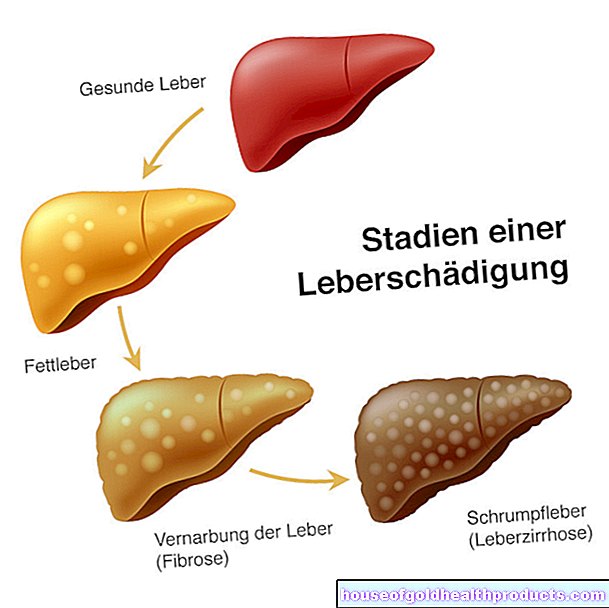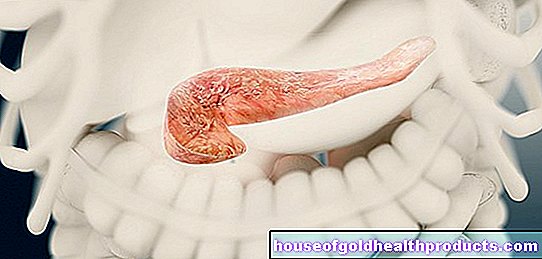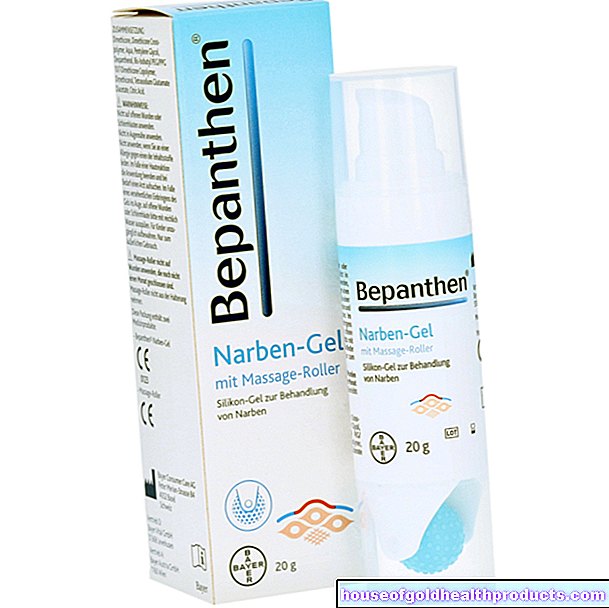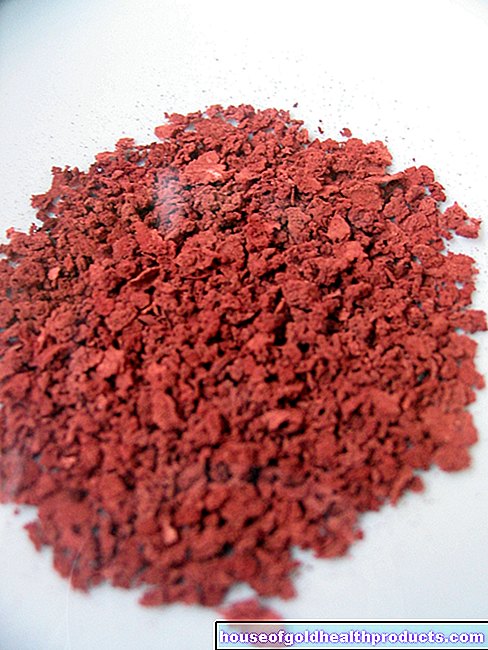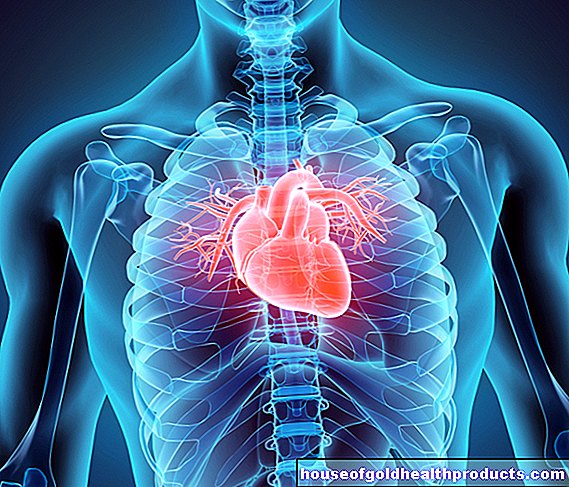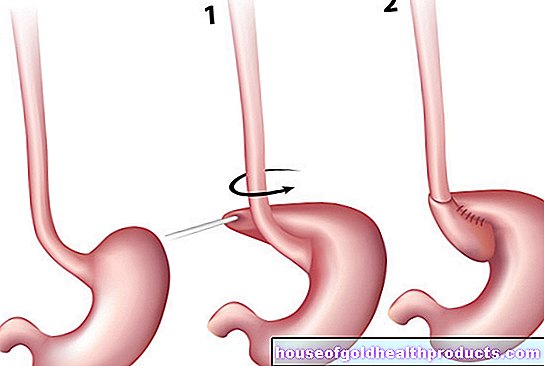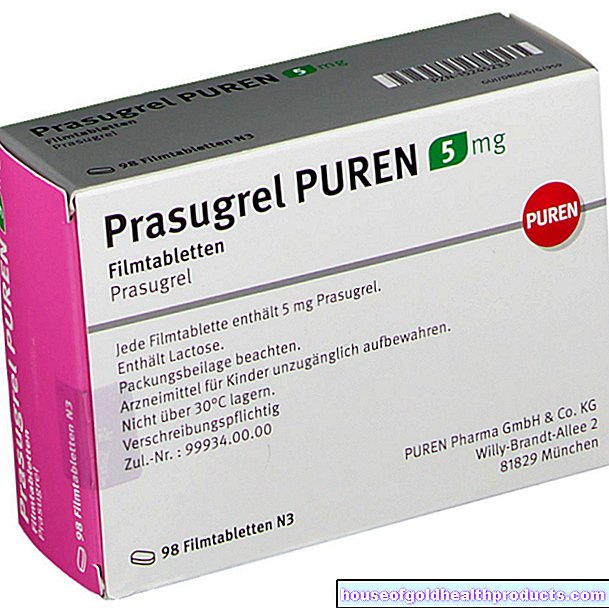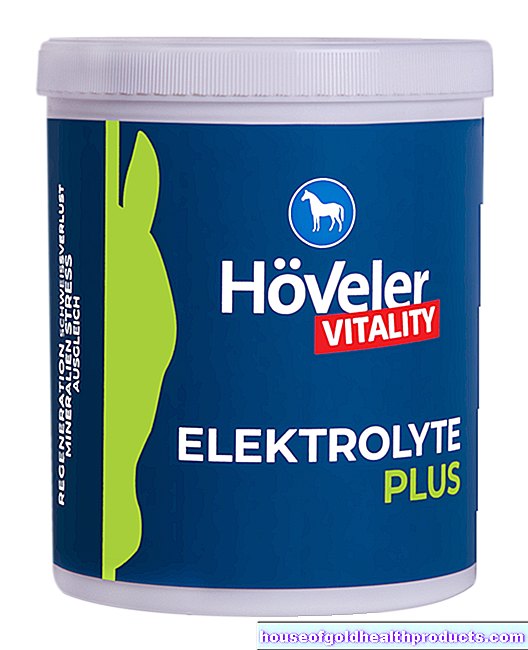Enzymes
Eva Rudolf-Müller is a freelance writer in the medical team. She studied human medicine and newspaper sciences and has repeatedly worked in both areas - as a doctor in the clinic, as a reviewer, and as a medical journalist for various specialist journals. She is currently working in online journalism, where a wide range of medicine is offered to everyone.
More about the experts All content is checked by medical journalists.Enzymes are proteins that act as biocatalysts to control and accelerate biochemical reactions in the organism without being changed in the process. They are contained in all body cells and are essential for all body functions. Enzymes not only control digestion, but also the entire metabolism and are therefore an essential factor for health. Read everything you need to know about enzymes: definition, structure, function and health problems associated with enzymes!
What are enzymes
The enzymes in the human body are in most cases giant molecules made of protein and vital - practically nothing works in the organism without enzymes. The function of these so-called biocatalysts is to enable or accelerate biochemical reactions in the cells.
In such reactions, for example, certain substances (substrates) are broken down or converted. Some enzymes work in a highly specific way: They can only bind a certain substrate and enable its chemical conversion. Others react with different substrates, but are closely tied to one type of reaction (see below: Enzyme classes).
Enzymes can often only develop their effect when they are activated by a so-called cofactor or several cofactors. These can be metal ions (such as iron, copper or zinc ions) or organic molecules (such as vitamins). Cofactors are either only temporarily or firmly and permanently linked to an enzyme. In the second case, they are also called the prosthetic group.
What is the function of enzymes?
Enzymes enable and accelerate almost all biochemical reactions in the body. These reactions include a wide variety of metabolic processes as well as the "reading" (transcribing) and duplication (replication) of the genetic information.
In such reactions, enzymes temporarily combine with the substance to be converted (substrate) so that it can be broken down or otherwise changed, for example. The enzymes themselves remain unchanged. However, they ensure that the energy required for the reaction (activation energy) is reduced. Actually, most of the chemical processes in cells require such a high activation energy that at the prevailing ambient temperature (internal body temperature of approx.37 degrees Celsius) cannot or only very slowly. It is only when enzymes lower the activation energy that such reactions are possible or accelerated to a sufficient extent.
Enzymes can be divided into six main groups, depending on the type of chemical reaction they catalyze. These enzyme classes (and some of their subgroups) are:
- Oxidoreductases: They catalyze reactions in which electrons are transferred (redox reactions); e.g. dehydrogenases, oxidases, reductases, catalases
- Transferases: They catalyze reactions in which entire functional groups (such as phosphate groups) are transferred from one molecule to another; e.g. transaminases, kinases, DNA polymerases
- Hydrolases: They catalyze reactions in which a chemical bond is either formed with the escape of water or is split with the addition of water; e.g. peptidases, phosphatases, proteases
- Lyases: They catalyze reactions in which chemical bonds are split or formed without consuming energy; e.g. aldolase
- Isomerases: They ensure that binding relationships within a molecule are rearranged; e.g. racemases, topoisomerases
- Ligases (synthetases): They catalyze reactions in which two molecules are connected to one another while consuming energy; e.g., carboxylases
What enzymes are there?
In the following you will find a small selection of important enzymes, their occurrence and tasks.
|
Surname |
Occurrence |
tasks |
|
Lysozyme |
saliva |
splits certain building blocks of bacterial cell walls and kills the pathogens (bactericidal effect) |
|
Amylases, lipases, proteases |
Oral and pancreas, gastric juice and intestinal secretions |
Digestion of carbohydrates (amylases), fats (lipases) and proteins (proteases) |
|
GOT (glutamate oxaloacetate transaminase - ASAT) |
Liver, heart and skeletal muscles, kidneys and lungs |
accelerates the metabolism of amino acids (building blocks of proteins) |
|
GPT (glutamate pyruvate transaminase - ALAT) |
liver |
Breakdown of protein in liver cells |
|
CK (creatine kinase) |
Muscle cells and brain |
Energy supply |
|
AP (alkaline phosphatase) |
in cells and body fluids, especially in the liver, bile ducts and bones |
splits so-called phosphoric acid esters; Their blood level gives, among other things, indications of liver and gallbladder diseases |
|
LAP (leucine aminopeptidase) |
Intestines, kidneys, bile, gastric juice, saliva, plasma |
Important for protein metabolism |
|
Gamma-GT (gamma-glutamyltransferase)
|
v. a. in the kidney (less in the pancreas, spleen, liver and small intestine) |
Transfer of Amino Acids |
|
SDH (sorbitol dehydrogenase, succinate dehydrogenase) |
liver |
Conversion of sorbitol into fructose |
|
LDH (lactate dehydrogenase) |
in all cells of all organs |
Lactic acid fermentation for energy production |
|
Cholinesterase |
Serum, intestine, pancreas |
splits so-called choline compounds; the blood count shows how well the liver can produce proteins |
|
Aldolase |
3 subgroups: in heart and skeletal muscles; in nerves, thyroid and adipose tissue; in the liver, kidney, small intestine |
catalyzes the breakdown of fruit sugar (fructose) |
|
Acid phosphatases |
in blood, bones, semen and prostate secretions |
cleaves phosphoric acid esters and catalyzes transphosphorylations |
What problems can enzymes cause?
There are various congenital enzyme defects, some of which can have serious consequences. One example is porphyria: This is a group of metabolic diseases that are all associated with the impaired formation of the red blood pigment heme. The cause is that one or more of the enzymes involved in the formation of heme have a genetic disorder.
Depending on the type of porphyria, this can lead to various symptoms such as colicky abdominal pain, vomiting, chronic constipation, fever, mood swings, paralysis or cardiovascular problems.
In the congenital metabolic disease phenylketonuria, the protein building block phenylalanine cannot be broken down due to an enzyme disorder. It therefore accumulates in the body. This is already noticeable in childhood: the excess of phenylalanine affects the development of the brain. The consequences are mental retardation, slowed physical development and seizures.
The so-called galactosemia is very dangerous, but fortunately seldom: This is also an enzyme-related disorder in the sugar metabolism. The body of those affected lacks the enzymes to process galactose. Although the sugar can be absorbed into the blood through the intestinal wall, it cannot be processed further. So it accumulates in the blood. Since galactose is also found in breast milk, affected breastfed children show symptoms such as vomiting, diarrhea and failure to thrive. If they continue to supply galactose with their food, there is a risk of serious damage and even death.
If you are lactose intolerant, your body does not produce sufficient amounts of the enzyme lactase. As a result, milk sugar (lactose) cannot be broken down in the small intestine and therefore cannot be absorbed into the blood. Instead, it goes on to the large intestine, where it is metabolized by bacteria. This can cause abdominal pain, gas and diarrhea, among other things.
Histamine intolerance is a controversial clinical picture. The messenger substance histamine occurs naturally in the body. Certain foods can also increase the amount of histamine in the body. Some people react with intolerance reactions (itching, nettle addiction, palpitations, etc.). It is possible that enzymes that are necessary for the breakdown of histamine are not available in sufficient quantities or their function is impaired.
Tags: pregnancy birth parasites foot care
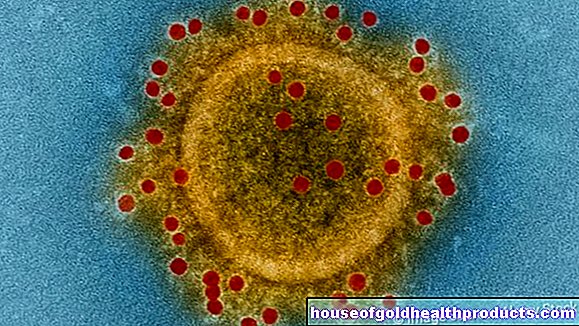
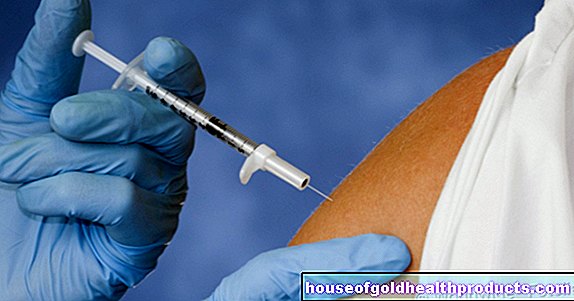


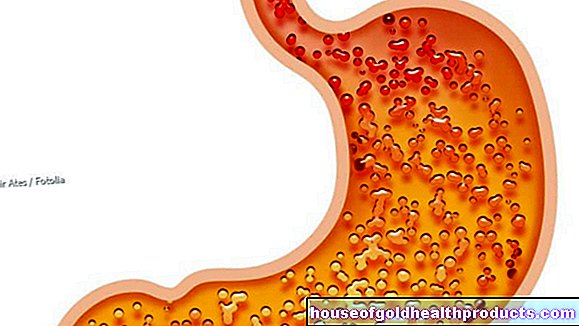
.jpg)

